Impact Hub Zürich
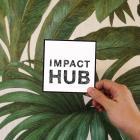
Impact Hub Zürich
Free
Ort
Zürich, Schweiz
Gegründet
2010
Follower
97

10 Essential Productivity Tools for the Busy Professional
I am often referred to by my colleagues and friends as, “Mr. Productivity” because I try to maximize every single second of my day. The reason is simple: I have so many crazy, bold, innovative ideas and there just isn’t enough time in the day to execute all of them! My ultimate hope is to make a positive impact on other people’s lives through my ideas, to get as much out of my own life as I possible can, and try to be the best version of myself - all at the same time.I also hope that in working hard at remaining incredibly positive everyday, I am able to inspire the amazing people around me to become the best versions of themselves as well. “How do you manage such crazy schedule?” people often ask – suggesting that I might be privy to some kind of magical life hack or formula. The truth is, I simply follow a system of best practices that I’ve perfected over many years. I’ve also studied productivity and efficiency for quite some time, enabling me to develop what I like to call my, “high-impact productivity routine”. This system, coupled with the people I surround myself with, brings out the best, most impactful and most productive version of myself. Add a dash of discipline and a pinch of Siri, and you’ve got Michael’s special recipe for high impact. When you’re finished reading this, I hope I’ve inspired you to create your own. 1. Effectiveness vs EfficiencyOne of the most important tips I can give you to boost your productivity is to remember the importance of being more effective, along with being more productive and efficient. Have a clear vision and goal. Don’t just waste time on being faster at doing something that is not meaningful/important to you, your customers, colleagues, family, etc. If you have no clear vision, set aside a weekend where you can focus on writing your vision and mission. 2. Feel and Engage in Your VisionOnce you’re clear on what you want to achieve, you’ll start to have more excitement, energy and purpose in your life. Practice visualizing and feeling the excitement of achieving your ultimate goal. This step is crucial. When you remind yourself of your vision each morning, allow the excitement and impact of achieving that vision to drive you to stay on course, no matter how tired you feel sometimes. 3. Exercise - Every MorningExercise. Sounds simple enough, right? You’d be amazed how many people don’t make this connection. You can even use your morning exercise to jump-start your day by repeating your personal vision and intentions for the day to yourself as you elevate your heart rate. When the weather is nice, I go for a short 10-15 minute run. Any exercise you enjoy doing is a good one, so find what works with your system. When there’s bad weather, I just do a 7-minute workout routine using this app, and when I’m in Bali, I usually always go for a 7-minute swim in the pool.Once in awhile, I just really don’t feel like working out in the morning. On these days, I simply spend my exercise time on personal development instead, usually watching either an inspiring video, or spending extra time reading through my personal vision and mission statements. As a minimum, I do 20 deep breaths to get my mind going. Bonus tip: Not able to get yourself pumped up for exercise in the morning? Create a playlist with your favorite songs, and put it on each morning as the first thing you do. 4. Clear IntentionsSet a clear intention for the day. This I usually do in the shower. I ask myself about the things I may have forgotten lately, and whether I am doing the most important things at the moment in general. Once you’ve gone over your quick mental check-up, commit to giving it your best for the day in order to move forward in those areas you’ve reflected on.Another fun activity is to think about jokes I can make with people later in the day. 5. Nutrition - Low CarbI eat a nutritious breakfast and a try to have healthy diet in general. This is another incredibly simple tip for peak productivity that a lot of people seem not to know or to ignore for some reason. I eat 100-200g of salmon, some pre-mixed salad and two eggs basically every morning. Salmon is packed with omega-3 fatty acids, which help with peak brain function and energy. In general, I follow a Paleo diet, which avoids any processed food, like sugar, bread, rice and pasta. Drink plenty of water. I aim to drink at least 3 liters of water everyday, as staying hydrated will help you feel more focused and energized throughout the day. 6. Plan & PrioritizeUse productivity/collaboration software like Asana. I use this software for all of my personal tasks, as it helps me collaborate with everyone I work with. Each morning, I list my top 3 projects and I review the top actions I need to take to move forward on those goals. Then I write down the top priority for the day, and I start working on it before doing anything else. 7. Power Nap and Re-focusTake a power nap. In today’s caffeinated, hyperactive business world, napping is sometimes frowned upon or seen as lazy. This is unfortunate, because power naps are shown to boost productivity. In fact, there are some companies that give all of their employees nap time after lunch and even provide sleeping spaces to encourage them. After lunch or in the afternoon, I always try to find a quiet spot for a 15-20 minute power nap. I close my eyes, relax, listen to special power napping audio, and drift away. A power nap will rejuvenate your mind and body, helping you re-focus your energy around mid-day. But don’t forget to set an alarm. Anything past 20 minutes could lead to what’s called “sleep inertia”, which will make you feel groggy and defeat the restorative purposes of your power naps. As soon as you wake up, become fully conscious by asking your yourself: What should I focus my thoughts on right now? With a clear mind, there is a less chance that you’ll get caught up in reactive behavior, and instead stay pro-active as much as possible throughout the rest of the day.Bonus tip: If you get groggy in the afternoon, try getting up, walk around and take 20 deep breaths every hour. It does wonders, by oxygenating your brain instantly. 8. Evening RoutineIn the evening, I either listen to personal development audio books, or I read an interesting and relevant non-fiction book for 1 hour. I also use my “5- minute journal” mobile app to reflect on the day, answering questions like:“Which 3 amazing things happened today?“What could I have done to make the day better”. I also use the “Way of Life” iOS app to ask myself the following questions:Did I do my best to be grateful today?Did I do my best to set clear goals for the day?Did I do my best to make progress towards those goals?Did I do my best to find meaning in what I do?Did I do my best to build positive relationships?Did I do my best to be fully engaged?Did I do my best to exercise for 30 min? (My Apple watch keeps track of this automatically every day, with my walks and runs)9. Calming down during eveningCut yourself off from working/ watching videos, etc. between 1-2 hours before bed. It’s especially important to avoid things like completing tasks, checking Facebook or Twitter updates, reading the latest news etc., as it releases dopamine in your brain and makes you more alert, instead of calming you down. Also, too much of the blue light that comes from most of today’s smartphones and tablets can have similar effect on your sleep that drinking does, and it can lead to insomnia in some cases. Around 10pm, I stop working/watching videos, and instead reflect on the day, follow my evening routine, re-read personal development notes to internalize learnings and remind myself of the exciting day ahead. 10. Keep a Regular Bedtime. I try to go to sleep at 11pm every night. I use Philips Hue to control all lights in the house, so before I go to sleep I simply say, “Hey Siri, please turn off the lights” (with a big smile on my face every time). I always aim to get 7.5-8 hours of sleep, so when I get into bed, I ask Siri to wake me up in 8 hours, no matter what time it is. When I have a good regular sleep rhythm going, I usually wake up automatically shortly before the alarm goes off. This is the ideal start of the day, as I’m instantly wide awake and alert, and ready to go on my morning run.Of course doing everything on the long list above is definitely a challenge and isn’t always possible. Having experimented so much with all of these tips, I find that this is simply the best combination for me personally and I do my best to follow it as closely as possible. I sincerely hope this list has inspired a few new ideas for you to try out and help you be in top shape every day. Only by being the best versions of ourselves every day, can we make the biggest possible positive impact on the world! And I strongly believe, that it all starts with a great daily routine :)About the authorMichael BodekaerMichael Bodekaer is a tireless visionary and the founder of multiple technology companies. His goal is to solve world problems through innovative technology, bold ideas and enthusiastic, engaged teamwork. Some of his companies include Labster, a revolutionary provider of virtual learning simulations. Livit, a company with the vision of empowering innovative global organizations to solve the world’s most important challenges, and Mailbird the best modern email communication platform for the Windows ecosystem.
-
Sihlquai 131 / Selnaustrasse 25 / Viaduktstrasse 93, 8000 Zürich,
Öffnungszeiten: Colab & Viadukt: Mo - Fr: 9:00 - 19:00 Uhr
Kraftwerk Zürich: Mo - Mi: 8:00-22:00 Uhr, Do & Fr: 08:00 - 00:00h
Sihlquai 131 / Selnaustrasse 25 / Viaduktstrasse 93, 8000 Zürich,
Öffnungszeiten:
Colab & Viadukt: Mo - Fr: 9:00 - 19:00 Uhr
Kraftwerk Zürich: Mo - Mi: 8:00-22:00 Uhr, Do & Fr: 08:00 - 00:00h
-
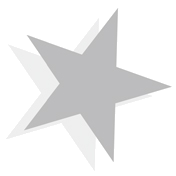 KOMANA
KOMANA Walter Peter Bearth
Walter Peter Bearth Rike.K_24187
Rike.K_24187 t_erdem
t_erdem Mr. SunShine
Mr. SunShine florian
florian Jiki
Jiki Mrs Low
Mrs Low Studio Richardson
Studio Richardson Linus_K
Linus_K jasmin_408495
jasmin_408495 Pagemo
Pagemo



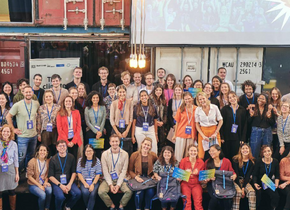
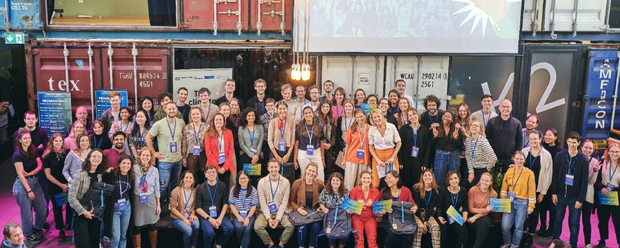
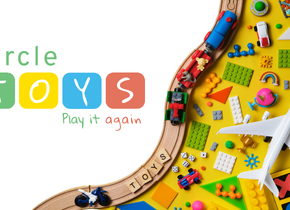
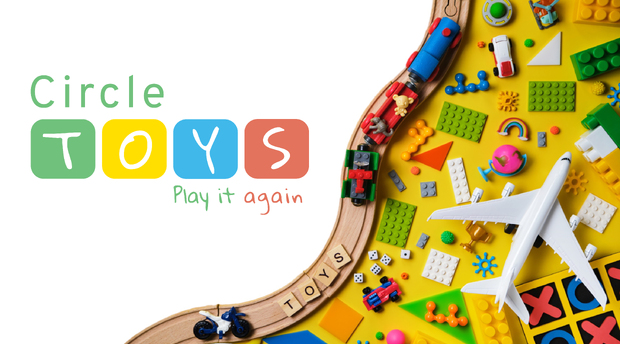











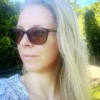

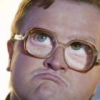

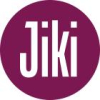


10 Essential Productivity Tools for the Busy Professional
I am often referred to by my colleagues and friends as, “Mr. Productivity” because I try to maximize every single second of my day. The reason is simple: I have so many crazy, bold, innovative ideas and there just isn’t enough time in the day to execute all of them!
My ultimate hope is to make a positive impact on other people’s lives through my ideas, to get as much out of my own life as I possible can, and try to be the best version of myself - all at the same time.
I also hope that in working hard at remaining incredibly positive everyday, I am able to inspire the amazing people around me to become the best versions of themselves as well.
“How do you manage such crazy schedule?” people often ask – suggesting that I might be privy to some kind of magical life hack or formula. The truth is, I simply follow a system of best practices that I’ve perfected over many years. I’ve also studied productivity and efficiency for quite some time, enabling me to develop what I like to call my, “high-impact productivity routine”. This system, coupled with the people I surround myself with, brings out the best, most impactful and most productive version of myself. Add a dash of discipline and a pinch of Siri, and you’ve got Michael’s special recipe for high impact. When you’re finished reading this, I hope I’ve inspired you to create your own.
1. Effectiveness vs Efficiency One of the most important tips I can give you to boost your productivity is to remember the importance of being more effective, along with being more productive and efficient. Have a clear vision and goal. Don’t just waste time on being faster at doing something that is not meaningful/important to you, your customers, colleagues, family, etc. If you have no clear vision, set aside a weekend where you can focus on writing your vision and mission. 2. Feel and Engage in Your Vision Once you’re clear on what you want to achieve, you’ll start to have more excitement, energy and purpose in your life. Practice visualizing and feeling the excitement of achieving your ultimate goal. This step is crucial. When you remind yourself of your vision each morning, allow the excitement and impact of achieving that vision to drive you to stay on course, no matter how tired you feel sometimes. 3. Exercise - Every Morning Exercise. Sounds simple enough, right? You’d be amazed how many people don’t make this connection. You can even use your morning exercise to jump-start your day by repeating your personal vision and intentions for the day to yourself as you elevate your heart rate. When the weather is nice, I go for a short 10-15 minute run. Any exercise you enjoy doing is a good one, so find what works with your system. When there’s bad weather, I just do a 7-minute workout routine using this app , and when I’m in Bali, I usually always go for a 7-minute swim in the pool.
Once in awhile, I just really don’t feel like working out in the morning. On these days, I simply spend my exercise time on personal development instead, usually watching either an inspiring video, or spending extra time reading through my personal vision and mission statements. As a minimum, I do 20 deep breaths to get my mind going. Bonus tip: Not able to get yourself pumped up for exercise in the morning? Create a playlist with your favorite songs, and put it on each morning as the first thing you do.
4. Clear Intentions Set a clear intention for the day. This I usually do in the shower. I ask myself about the things I may have forgotten lately, and whether I am doing the most important things at the moment in general. Once you’ve gone over your quick mental check-up, commit to giving it your best for the day in order to move forward in those areas you’ve reflected on. Another fun activity is to think about jokes I can make with people later in the day. 5. Nutrition - Low Carb I eat a nutritious breakfast and a try to have healthy diet in general. This is another incredibly simple tip for peak productivity that a lot of people seem not to know or to ignore for some reason. I eat 100-200g of salmon, some pre-mixed salad and two eggs basically every morning. Salmon is packed with omega-3 fatty acids, which help with peak brain function and energy. In general, I follow a Paleo diet, which avoids any processed food, like sugar, bread, rice and pasta.
Drink plenty of water. I aim to drink at least 3 liters of water everyday, as staying hydrated will help you feel more focused and energized throughout the day.
6. Plan & Prioritize Use productivity/collaboration software like Asana. I use this software for all of my personal tasks, as it helps me collaborate with everyone I work with. Each morning, I list my top 3 projects and I review the top actions I need to take to move forward on those goals. Then I write down the top priority for the day, and I start working on it before doing anything else. 7. Power Nap and Re-focus Take a power nap. In today’s caffeinated, hyperactive business world, napping is sometimes frowned upon or seen as lazy. This is unfortunate, because power naps are shown to boost productivity. In fact, there are some companies that give all of their employees nap time after lunch and even provide sleeping spaces to encourage them. After lunch or in the afternoon, I always try to find a quiet spot for a 15-20 minute power nap. I close my eyes, relax, listen to special power napping audio, and drift away. A power nap will rejuvenate your mind and body, helping you re-focus your energy around mid-day. But don’t forget to set an alarm. Anything past 20 minutes could lead to what’s called “sleep inertia”, which will make you feel groggy and defeat the restorative purposes of your power naps. As soon as you wake up, become fully conscious by asking your yourself: What should I focus my thoughts on right now? With a clear mind, there is a less chance that you’ll get caught up in reactive behavior, and instead stay pro-active as much as possible throughout the rest of the day. Bonus tip: If you get groggy in the afternoon, try getting up, walk around and take 20 deep breaths every hour. It does wonders, by oxygenating your brain instantly. 8. Evening Routine In the evening, I either listen to personal development audio books, or I read an interesting and relevant non-fiction book for 1 hour. I also use my “ 5- minute journal ” mobile app to reflect on the day, answering questions like:
“Which 3 amazing things happened today?
“What could I have done to make the day better”.
I also use the “ Way of Life ” iOS app to ask myself the following questions:
Did I do my best to be grateful today?
Did I do my best to set clear goals for the day?
Did I do my best to make progress towards those goals?
Did I do my best to find meaning in what I do?
Did I do my best to build positive relationships?
Did I do my best to be fully engaged?
Did I do my best to exercise for 30 min? (My Apple watch keeps track of this automatically every day, with my walks and runs)
9. Calming down during evening Cut yourself off from working/ watching videos, etc. between 1-2 hours before bed. It’s especially important to avoid things like completing tasks, checking Facebook or Twitter updates, reading the latest news etc., as it releases dopamine in your brain and makes you more alert, instead of calming you down. Also, too much of the blue light that comes from most of today’s smartphones and tablets can have similar effect on your sleep that drinking does, and it can lead to insomnia in some cases. Around 10pm, I stop working/watching videos, and instead reflect on the day, follow my evening routine, re-read personal development notes to internalize learnings and remind myself of the exciting day ahead. 10. Keep a Regular Bedtime. I try to go to sleep at 11pm every night. I use Philips Hue to control all lights in the house, so before I go to sleep I simply say, “Hey Siri, please turn off the lights” (with a big smile on my face every time). I always aim to get 7.5-8 hours of sleep, so when I get into bed, I ask Siri to wake me up in 8 hours, no matter what time it is. When I have a good regular sleep rhythm going, I usually wake up automatically shortly before the alarm goes off. This is the ideal start of the day, as I’m instantly wide awake and alert, and ready to go on my morning run.
Of course doing everything on the long list above is definitely a challenge and isn’t always possible. Having experimented so much with all of these tips, I find that this is simply the best combination for me personally and I do my best to follow it as closely as possible.
I sincerely hope this list has inspired a few new ideas for you to try out and help you be in top shape every day. Only by being the best versions of ourselves every day, can we make the biggest possible positive impact on the world! And I strongly believe, that it all starts with a great daily routine :)
About the author
Michael Bodekaer Michael Bodekaer is a tireless visionary and the founder of multiple technology companies. His goal is to solve world problems through innovative technology, bold ideas and enthusiastic, engaged teamwork. Some of his companies include Labster, a revolutionary provider of virtual learning simulations. Livit, a company with the vision of empowering innovative global organizations to solve the world’s most important challenges, and Mailbird the best modern email communication platform for the Windows ecosystem.
Weiterlesen
WeAct | „Thank god it’s Monday“ – wie ich Sinn in der Arbeit fand
Mir steht der Sinn nach Veränderung
Vor zwei Jahren fragte man mich: “Warum gibst du deinen gut bezahlten Berater-Job auf um bei einem Startup zu arbeiten?”. Heute höre ich: „Bereust du deine Entscheidung?“ Meine Antwort ist ganz klar: Nein, ich bereue nichts. Ich gehöre zu den Menschen, die man als „Generation Y“ bezeichnet – auf der Suche nach dem Sinn im Leben und in der Arbeit. Meinen Sinn habe ich nach längerer Suche vor etwa einem Jahr gefunden, beim Social Business WeAct .
WeAct wurde vor 5 Jahre von ETH-Studenten gegründet mit dem Ziel, Mensch dabei zu unterstützten das Leben selbst in die Hand zu nehmen und so zu Leben, dass das eigene Glück mit der Umwelt und dem Wohlbefinden anderer Menschen in Einklang ist. Auf meiner Suche nach einer sinnvollen Tätigkeit hat mich dieses Unternehmensziel natürlich angesprochen, aber auch der innovative unternehmerische Ansatz von WeAct habt mich überzeugt.
Veränderungen sind schwierig, aber sie machen auch Spass
Das Social Startup WeAct bietet spielerische Mitarbeiter-Engagement Programme für Unternehmen, in Form von „Team Challenges“, bei der man für nachhaltiges Verhalten im Team Punkte sammeln kann. Das heisst, dass dank WeAct die Mitarbeitenden durch einen spielerischen Ansatz, basierend auf Gamification, und im Team den eigenen Alltag lernen neu zu gestalten. Durch die gemeinsamen Aktivitäten entwickelt sich der Teamgeist. Das Punktesystem setzt Anreize und Belohnungen für Veränderungen im Alltag. Ich finde es faszinierend, dass man dadurch Veränderungen mit Spass verbinden kann und bin vom WeAct Ansatz begeistert.
Mein persönliches Lieblings-Programm von WeAct ist der jährliche schweizweite Teamwettbewerb „ We Act for Impact “. Dabei treten Mitarbeiter-Teams aus verschiedenen Betrieben während 3 Wochen gegeneinander an um gemeinsam Positives zu bewirken. Sie haben gemeinsam Spass und können auch Preise gewinnen. Der nächste Wettbewerb findet im September 2017 statt. Jeder, der wie ich gerne etwas Neues ausprobiert, und im Team etwas unternehmen möchte, kann mitmachen (Infos: www.weactforimact.ch ).
Glück erleben, nicht besitzen
Ich weiss, dass ein nachhaltiger Lebensstil für Jeden möglich ist, denn ich habe mich selbst in den letzten zwei Jahren wesentlich verändert. Früher habe ich jede Menge eingekauft, bin viel gereist und habe täglich Fleisch gegessen. Heute kaufe ich viel bewusster ein, habe meine Reise-Aktivitäten und Fleischkonsum stark reduziert. Trotzdem bin ich nicht unglücklicher als früher, ganz im Gegenteil! Ich habe heute den Luxus eines 5-Minuten Arbeitswegs, die Möglichkeit über Mittag joggen oder schwimmen zu gehen und die Freiheit meine Arbeitszeiten relativ flexibel zu gestalten. Und nicht zuletzt habe ich die begeisterten Feedbacks der „We Act for Impact“-Teilnehmer, die zeigen, dass wir etwas Positives bewirken.
Was sich bei mir durch diese Umstellungen bestätigt hat und viele vergessen: Mehr Geld und Sachen besitzen macht (ab einem gewissen Level) nicht glücklicher. Schöne Erlebnisse, Freiheit und eine sinnvolle Tätigkeit machen glücklich. Jeder kann sein Leben positiv verändern. Es geht dabei nicht darum, radikal von einem Tag auf den anderen alles umzukrempeln, sondern neue Dinge zu probieren und zu schauen wie man sich dabei fühlt, Schritt für Schritt.
6 Tipps für ein erfüllteres Leben
Jedem, der auch in seinem Leben etwas mehr Platz für Glück schaffen möchte, gebe ich folgende Ratschläge auf den Weg:
Besitztümer checken: Die Dinge die ich besitze: Brauche ich Sie regelmässig und machen sie mich glücklich? Wenn nein: verkaufen, teilen, verschenken, recyceln, entsorgen.
Werte definieren: Was ist mir wirklich wichtig? Wobei fühle ich mich glücklich? Auf welche Dinge möchte ich am Ende meines Lebens zurückblicken?
Zeit abgleichen : Nachdem du deine Werte und Ziele identifiziert hast, frage dich: Verwende ich meine Zeit tatsächlich darauf diese zu erreichen? Welche Zeitfresser kann ich streichen?
Ziele setzen: Entscheide dich, welche Veränderungen du für dich persönlich erreichen möchtest. Wenn das Ziel zu gross und überwältigend erscheint, teile es auf in kleine Zwischenziele. Tipp: Lade die Woopmylife App ( http://woopmylife.org ) runter, um Gewohnheiten gezielt zu verändern.
Herausforderung annehmen: Nimm dir etwas Konkretes vor, was du an deinem Lebensstil verändern möchtest und plane die Veränderung in deinen Alltag ein. Nehme dir vor das neue Verhalten für mindestens 3 Wochen umzusetzen. Danach wird es dir viel leichter fallen die neue Gewohnheit beizubehalten.
Spass haben: Belohne dich für 3 Wochen erfolgreiches Umsetzen der Veränderung, z.B. mit einer Massage oder einem guten Buch. Wenn es nicht sofort klappt oder bei kurzfristigen Rückschlägen: Gibt nicht auf! Suche dir Unterstützung, z.B. bei einem Freund, denn gemeinsam fällt es einfacher.
Über den Autor
Irene Schlatter
Irene hat ihre Berater-Karriere für die Social Startup-Szene ausgetauscht und ist seit etwa einem Jahr bei WeAct als „Head of Marketing and Communication“ unterwegs. Sie liebt Herausforderungen, deshalb setzt sie sich gerne eine persönliche Jahres-Challenge. 2015 ist sie zum Beispiel zum ersten Mal einen Halbmarathon gerannt.
Weiterlesen
Don’t tell me why – show me how! Unlocking the secrets of how to design good stories.
Why Use Stories?
It’s not like we don’t get why. It’s not the physical properties of a luxury auto, candlelight dinner or top model looks that we want. What we want are the feelings, the emotions, the experiences that we perceive those things can make us feel. The emotion a story delivers directly influences how we feel about ourselves vis-à-vis a product, a service or competitor.
A perfectly happy client can turn into an unhappy customer if she hears another client received a better offer, then turn back into a happy customer when you assure her the story she heard was false, circulated by an unethical rival. If you think about this, nothing physically changed. But your story about reality completely changed her perceptions of what is true, and consequently, real.
Change the story and you change the meaning of factual reality. Appreciating the power stories can exert is both an exciting opportunity and awesome responsibility. As Obi-wan Kenobi memorably told Spielberg’s reluctant hero, “Use the Force Luke, use the Force!”
None of that “why stuff” matters if we don’t know HOW
With all we’ve learned from science and research about WHY stories work – none of it really matters if we don’t know HOW to find, craft and tell our own stories for personal or professional gain.
Every month I try to get to at least 3-4 meetups where I run into entrepreneurs and startup founders who are totally passionate about their business and have great ideas to build the next new new thing. I can tell they believe in it to the same degree Morpheus does in the scene from Matrix where the Oracle tells Neo: “… he believes in it (that you’re the ONE) so much, he will sacrifice his own life for it.”
Then later on my way home, I’m wishing above all else, that these driven, talented and determined women and men, would learn how to tell a purposeful story. A story that will move their listener to help them get the funds, or partners, or sales or whatever they need to get to the next level. I want them to learn how to tell purposeful stories because ideas, startups and people don’t grow in isolation.
The secret to designing a good story is open source
I’ve made it my personal mission to spread the news the mystery of how to design good stories was solved in 1949 and put into the public domain where it remains to this day. Download it right now. Here’s the link: Campbell’s Monomyth
http://www.joelblom.net/2016/11/02/campbells-heros-journey-illust/
Looks complicated? Don’t be discouraged, treasure maps can be confusing the first time you lay eyes on one. But it’s worth learning about because the treasure this map can lead to is infinitely more valuable than any pirate treasure or Swiss bank account of an overthrown African dictator could ever be. For one thing, we can use the map a thousand times over and always be led to find a new treasure. Or a thousand different people can use it and not one will end up with the same treasure.
Here are only a few famous screenplays that apply the Hero’s Journey to great effect (and gazillions of dollars): Avatar, Star Wars, Jurassic Park, Harry Potter, The Lion King, Wonderful Wizard of Oz, Chinatown, Casablanca, etc.
But hang on, Campbell’s blueprint is not a magic wand, nor is it a fill-in-the-blank template. Think of it like code: you’ve been given an amazing script, but it doesn’t mean if you paste it into your code you will have a killer app.
Applying Campbell’s blueprint to craft better stories
What it does mean is if you include the elements and move your story’s hero from his known world into the unknown and travel through different stages on his journey, your stories have a real chance of resonating with your listener.
Which elements and in what order you ask? I hate to say this but it depends … It depends on the purpose of your story. It depends on your audience; it depends on your own imagination. The good thing is the Hero’s Journey blueprint is endlessly adaptable and works for fiction, fantasy, memoir, creative non-fiction and every genre of story there is. It will work for you too.
I’ve coined an acronym and designed what I call the S.T.O.R.Y. Framework http://www.joelblom.net/project/how/ to make Campbell’s masterwork more accessible and useful to all the extraordinary people who have a story inside that needs to be told.
If you found this post helpful, then you will love what we’re doing at the Zurich Storytellers meetup: http://www.meetup.com/Zurich-Storytellers-Meetup/
Impact Hub’s newest Tribe where storytellers of all stripes are welcome. About the author
Joel Blom I always wished I could spellbind people with a good story. I saw others do it, but falsely assumed they were “born naturals.” After many years of studying stories, and also testing the theories in corporate marketing communications jobs, I’ve learned how, what and why good stories make good business. My mission today is to share what I know so you can tell good stories that we all want to hear.
Weiterlesen
travelmemo.com
Kompotoi | Man kann doch Gold scheissen: oder über den Sinn der Trockentoilette
Das erste Mal hörte ich von Trockentoiletten während meines Studiums und konnte mich sofort für dieses unkonventionelle Thema begeistern. Es wurde mir klar, dass der heutige Umgang mit Fäkalien nicht nachhaltig ist. Durch das Drücken der Spültaste am WC verschwinden unsere Ausscheidungsprodukte augenblicklich aus Auge und Sinn. Dies ist einerseits bequem und angenehm aber gleichzeitig auch ein grosser Verlust für unsere Gesellschaft. Allein um die Überreste unserer Verdauung wegzutransportieren brauchen und verunreinigen wir eine Unmenge an sauberem Trinkwasser. Dieses Wasser muss daraufhin in den ARAs aufwändig wieder gesäubert werden und Reststoffe belasten die Gewässer.
Hier zeigt sich bereits der erste Vorteil von sogenannten Trockentoiletten. Wie im Namen bereits erwähnt, werden die Fäkalien trocken und ohne Wasser gesammelt. Und dieses konzentriert gesammelte Produkt ist Gold. Schwarzes Gold oder auch gelbes Gold. Oder präzisiert ausgedrückt kann es zu Gold verarbeitet werden. Denn unser Körper scheidet täglich wertvolle Nährstoffe aus, welche aber leider dem natürlichen Kreislauf entzogen werden. Bei gesunden Menschen ist der Urin steril und enthält erst noch sowohl die Hauptnährstoffe (Stickstoff, Phosphor, Kalium) im richtigen Verhältnis wie es die Pflanze braucht als auch wichtige Spurennährstoffe. Urin separat gesammelt und mit Wasser verdünnt ist ein wertvoller Dünger für Garten und Rasen. Der Stuhl hingegen kann durch einen Kompostierprozess zu Humus umgewandelt werden, welcher sprichwörtlich schwarzes Gold für den Boden ist.
Im Stuhl sind jedoch auch Krankheitskeime enthalten und heutzutage finden sich in den Ausscheidungen auch Medikamentenrückstände wieder. Aus diesem Grund ist es sehr wichtig, die wertvollen Nährstoffe fachgerecht aufzubereiten.
Und genau an dieser Stelle liegt mein Engagement beim Verein Kompotoi. Ich hatte stets das Ziel, meine Zeit im Leben für etwas Sinnvolles einzusetzen und genau diese Gelegenheit bietet mir der Verein Kompotoi. Er setzt sich für den Aufbau gesunder Böden und den Schutz der aquatischen Systeme ein. Dabei ist der Aufhänger die Trockentoilette, welche beide Ansätze in sich vereint. Es gibt die verschiedensten Modelle für verschiedene Lokalitäten. Sei es die Miettoilette Kompotoi (Bild) oder das Kazuba, welche sich für öffentliche Plätze eignet oder Modelle für den privaten Bereich. Der Verein Kompotoi bietet Beratungen an und erforscht und entwickelt standardisierte Aufbereitungsverfahren, welche den hygienischen Anforderungen entsprechen. Dazu arbeiten wir mit der Zürcher Hochschule für angewandte Wissenschaften und mit den Behörden zusammen. Es ist unser Ziel über dieses Thema aufzuklären und praktische Lösungsansätze für eine zukunftsfähige Gesellschaft zu bieten.
Mein eindrücklichstes Erlebnis bei Kompotoi war, als ich nach der Kompostierung der Fäkalien einfach nach Humus duftende Erde in den Händen hielt. Es hat mich berührt zu sehen wie ein Abfallprodukt zu wertvoller Erde umgewandelt wird. Und die Toiletten stinken übrigens nicht! Falls sie es tun, werden sie falsch betrieben oder wurden falsch konzipiert.
Ich hoffe sehr, dass dieser Beitrag den anfänglichen Ekel zu diesem Thema überwunden hat. Vielleicht möchten Sie sogar mithelfen, durchs Scheissen die Welt etwas zu verbessern. ;) Über die Autorin
Iris Hansen hat 2014 ihr Studium als Umweltingenieurin an der Zürcher Fachhochschule für angewandte Wissenschaften (ZHAW) abgeschlossen. Seither arbeitet sie im Vorstand des Vereins Kompotoi an der Forschung und Entwicklung von geeigneten Verfahren, Menschenmist wieder in wertvolle Ausgangsmaterialien umzuwandeln.
Weiterlesen
e-braininjury | Unternehmertum als Wissenschaft
Während gut einem Jahr Jungunternehmertum passiert schon ganz schön viel. Und klar, lernen tut man dabei ständig - sowohl auf angenehme als auch auf ganz und gar unangenehme Weise. Einen Beitrag zu einer Erfahrung aus dem Jungunternehmertum zu verfassen sollte entsprechend machbar sein. Denkste! Zugegeben, dass ich seit meiner Deutschmatur vor knapp einem Jahrzehnt kaum einen deutschen Text mehr geschrieben habe, hat die Sache nicht einfacher gemacht - wenn auch eher bezüglich Beinsteller wie Orthographie, Grammatik und (mein persönlicher Erzfeind) der Kommasetzung. Inhaltlich kam ich bei jeder Idee und jedem Ansatz immer wieder an den gleichen Punkt: "Wen interessiert's denn?". Das meiste, was man heutzutage über die verschiedenen Vor- und Nachteile vom Jungunternehmertum und die diversen Strategien, Methoden und Verfahrenstechniken weiss, wurde bereits in Endlosschleifen in Onlineartikeln, - Berichten und Tutorials durchgekaut. Moment mal, einen Schritt zurück: Alles, was man weiss? Was ist denn mit dem, das wir eben noch nicht wissen?
Als ich mich vor gut einem Jahr plötzlich im Gewirr vom Jungunternehmertum wieder fand - verdutzt und unerfahren und zugegebenerweise auf der Naivitätsskala im ziemlich oberen Bereich - war mein erster Ansatz möglichst viel vorab zu lernen. Also kaufte ich Bücher, schaute online Kurse und besuchte Workshops und versuchte, wie ein Schwamm nach Jahren in der Wüste, alles in mir aufzusaugen. Wenn es in dem Dauerregen von Informationen, Wissen und Meinungen etwas gab, das meiner Meinung nach nicht ausreichend Beachtung fand, dann, dass das Unternehmertum als Wissenschaft noch in den Kinderschuhen bzw. im Babystrampelanzug steckt.
Das Unternehmertum erfreut sich erst seit einigen Jahren einer solch grossen Beliebtheit und Verbreitung. Somit ist die Wissenschaft und Kunst dahinter nun mal noch nicht im selben Ausmass erforscht wie die Mathematik oder Physik, welche bereits vor mehreren tausend Jahren den Ägyptern Kopfschmerzen bereiteten. Je jünger eine Wissenschaft, desto weniger wissen wir über das, was ihr Thema ist. Man könnte sagen, dass diese Unwissenheit es erschwert sich in das Unternehmertum zu wagen oder ein Start-up durchzuziehen. Aber dreht es doch einmal um: Es bedeutet auch, dass es noch viel mehr zu entdecken gibt! Es scheint nicht bekannt zu sein, was genau Thomas Edison gesagt hat, als seine unzähligen Experimente für eine neuartige Batterie nicht das beabsichtigte Resultat aufbrachten, was der Aussage aber nicht die Bedeutung nimmt: „ I have not failed 700 times. I have discovered 700 ways that won’t work. Therefore I am 700 times nearer the final successful experiment” . Über den Autor
Melanie is the initiator of e-braininjury (watch out for the name change! The project has expanded…), a software solution to enable people to care for their loved ones no matter how busy their life is. Initially focused on brain injury patients, the project has expanded to cover people with various diseases and injuries and their social environment.
Weiterlesen
Food Waste | A Battle of People & Technology
A recent estimate from the FAO puts Earth’s current amount of food waste at 1.3 billion tonnes per year, which is around one-third of all the food that is being produced. That is definitely 1.3 billion tonnes too much! We today face a food distribution problem, not a food production problem.
Due to the scale of this issue, there are many organisations around the world trying to work to reduce the amount of food wasted. In Switzerland, one of these organisation goes by the name “Food Sharing”. The platform they use to operate here in Switzerland originally comes from Germany and it, along with the movement here in Zurich, was started with the help of Fiona Glättli, a true “Food Activist”. She, along with others in her organisation, coordinate and ensure that the leftover food, from the many partners they have managed to acquire here in Zurich, is not thrown away but distributed back to the population. Friends, family, acquaintances and even strangers are the ones consuming these leftovers, which encompass everything from loaves of bread to Chicken Tikka Masala.
Fighting Fire with Fire
The work Fiona and others like her do is extremely valuable - however it is not tackling the root cause. Fighting food waste by redistributing the leftovers to others who consume it is like trying to fix a sinking boat with duct tape - while one or two holes may be covered, the boat as a whole is still sinking (we’re the boat).
Within the food supply chain, technology is used to optimise the process and gain efficiency. However, it seems that technological innovation stops the moment the food hits the shelves in the supermarket. With households and gastronomy outlets accounting for nearly half of all food wastage, surely there is room for improvement?
People vs. Technology
Essentially there are two angles of attacking this problem. The people factor in this equation is almost too large to be ignored; purely by adopting 5 tricks you can reduce your personal food waste significantly. As we see however, people rarely change without an incentive to do so. With many of our global problems (water shortage, emissions, etc.) still top of mind after so many years, we have yet to really motivate the world to change. So why not force it, for the good of the planet?
Innovation and change in the so-called 'last mile’ of the food supply chain could have huge transformative effects on household consumption of food, as well as how much food outlets are throwing away. Instead of packaging vegetables and fresh fruit into 1kg or 400g portions, perhaps we should create packaging with standardised portions for 1, 2, 4 people, thereby reducing the amount of food that is bought erroneously (the “eyes bigger than your stomach” phenomenon).
Companies already exist in the field of food waste optimisation, but their software is proprietary and expensive. Making it either open-source or more readily available would allow households to use insights gained from data to optimise their food wastage even further. This technology and software could be applied to gastronomy outlets as well; smaller establishments don’t have the resources of larger enterprises to combat waste in the same way, so doing this would enable them to make a change. As smaller establishments account for a significant portion of food outlets, enabling this would have a huge impact!
We need to change the way we consume food. If we don’t all contribute towards this common goal, just remember, we’re all in the same boat - and it’s sinking.
About the Author
Matthew Brandt Born in Canada and raised in Switzerland and Japan, Matthew is a trilingual Digital Analyst who loves all things technology (a true geek) and food. He is a founder of Cook Eat and a passionate cook, motorbiker and photographer.
Weiterlesen